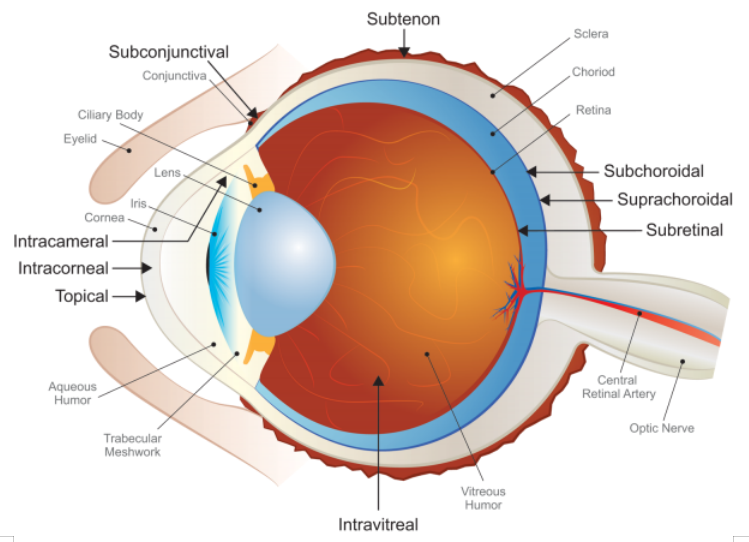- You are here: Home
- Disease Models
- Ocular Disease Models
Disease Models
- Oncology Models
-
Inflammation & Autoimmune Disease Models
- Rheumatoid Arthritis Models
- Glomerulonephritis Models
- Multiple Sclerosis (MS) Models
- Ocular Inflammation Models
- Sjögren's Syndrome Model
- LPS-induced Acute Lung Injury Model
- Peritonitis Models
- Passive Cutaneous Anaphylaxis Model
- Delayed-Type Hypersensitivity (DTH) Models
- Inflammatory Bowel Disease Models
- Systemic Lupus Erythematosus Animal Models
- Asthma Model
- Sepsis Model
- Psoriasis Model
- Atopic Dermatitis (AD) Model
- Scleroderma Model
- Gouty Arthritis Model
- Carrageenan-Induced Air Pouch Synovitis Model
- Carrageenan-Induced Paw Edema Model
- Experimental Autoimmune Myasthenia Gravis (EAMG) Model
-
Cardiovascular Disease Models
- Surgical Models
- Animal Models of Hypertension
- Venous Thrombosis Model
- Atherosclerosis model
- Cardiac Arrhythmia Model
- Hyperlipoidemia Model
- Doxorubicin-induced Heart Failure Model
- Isoproterenol-induced Heart Failure Model
- Arterial Thrombosis Model
- Pulmonary Arterial Hypertension (PAH) Models
- Heart Failure with Preserved Ejection Fraction (HFpEF) Model
-
Neurological Disease Models
- Alzheimer's Disease Modeling and Assays
- Seizure Models
- Parkinson's Disease Models
- Ischemic Stroke Models
- Acute Spinal Cord Injury (ASCI) Model
- Traumatic Brain Injury (TBI) Model
- Hypoxic-Ischemic Encephalopathy (HIE) Model
- Tourette Syndrome (TS) Model
- Amyotrophic Lateral Sclerosis (ALS) Model
- Huntington's Disease (HD) Model
- Intracerebral hemorrhage (ICH) Models
- Pain Models
- Metabolic Disease Models
- Liver Disease Models
- Rare Disease Models
- Respiratory Disease Models
- Digestive Disease Models
-
Urology Disease Models
- Cisplatin-induced Nephrotoxicity Model
- Unilateral Ureteral Obstruction Model
- 5/6 Nephrectomy Model
- Renal Ischemia-Reperfusion Injury (RIRI) Model
- Diabetic Nephropathy (DN) Models
- Passive Heymann Nephritis (PHN) Model
- Adenine-Induced Chronic Kidney Disease (CKD) Model
- Kidney Stone Model
- Doxorubicin-Induced Nephropathy Model
- Orthopedic Disease Models
- Ocular Disease Models
- Skin Disease Models
- Infectious Disease Models
Ocular Disease Models
At least one-third of the 4000 diseases and syndromes known to affect humans are associated with eyes. Over the past two decades, more and more studies have been performed on the mechanisms of ocular diseases. Understanding the genetics of the eye and the clinical and molecular features of ocular diseases is important for appropriate diagnosis and patient management. Therefore, we need to develop a large number of new compounds to meet the increasing treatment needs.
Choosing the right preclinical ocular disease model is a critical factor for your compound's success. Creative Bioarray offers multiple models of ocular diseases. The core of our ocular disease models design is the strict collection and interpretation of objective data. Our team works with certified veterinarians and human eye doctors to ensure the best data and images are captured. We also offer rigorous pre-screening eye exams to eliminate preexisting eye defects that may adversely affect your eye research results.

Our portfolio of ocular disease models cover the following diseases
- Inflammatory disorders
- Eye irritation
- Retinopathy of prematurity
- Stromal ulceration
- Corneal graft
- Infectious keratitis
- Diabetic retinopathy
Data & Figures
 Firgue1. Retinopathy of prematury (stained with H&E)
Firgue1. Retinopathy of prematury (stained with H&E)
Our integrated research team provides expertise in the scientific and technical disciplines of ophthalmology and pharmacology. The preclinical ophthalmology study of Creative Bioarray was performed in a variety of assays, including acute irritation, eye tissue distribution, pharmacokinetics/pharmacodynamics (PK/PD), dose escalation, acute and repeated dose toxicity.
Quotation and ordering
We have extensive experience in developing disease models based on scientific publications. To discuss any of these models further or to discuss the possibility of developing alternative models, please do not hesitate to contact us.
Reference
- Krebs, M. P. et al. Mouse models of human ocular disease for translational research. PloS One 12, e0183837 (2017).
For research use only. Not for any other purpose.

